Did the SARS-CoV-2 virus arise from a bat coronavirus research program in a Chinese laboratory? Very possibly.
By Milton Leitenberg | June 4, 2020
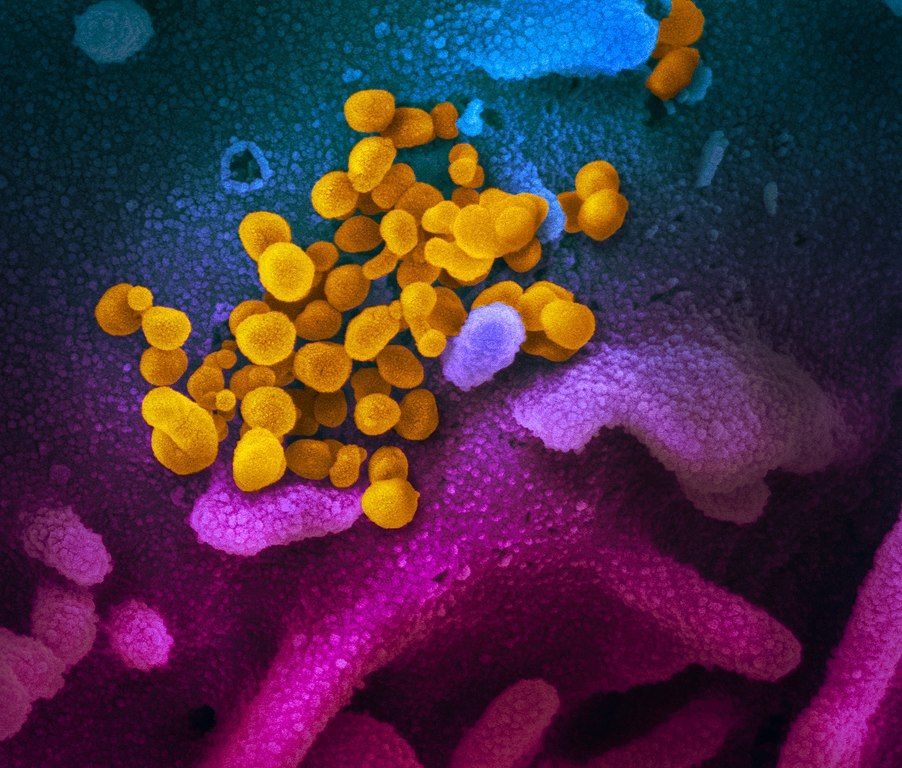 This scanning electron microscope image shows SARS-CoV-2 in yellow. (Photo credit: Credit: NIAID-RML)
This scanning electron microscope image shows SARS-CoV-2 in yellow. (Photo credit: Credit: NIAID-RML)
On May 15, the Bulletin of the Atomic Scientists published a short commentary titled, “Let evidence, not talk radio, determine whether the outbreak started in a lab,” by Ali Nouri, a biologist and president of the Federation of American Scientists. “The outbreak” referred to the pandemic of SARS-CoV-2 now circling the globe. It is a thin commentary, and it is puzzling why the Bulletin thought it desirable to publish it at all. Only two weeks earlier the journal had published a reasoned and competent appraisal by Kings College London biosecurity expert Filippa Lentzos titled, “Natural spillover or research lab leak? Why a credible investigation is needed to determine the origin of the coronavirus pandemic.”
The Nouri article very correctly pilloried the statements by President Donald Trump, Secretary of State Mike Pompeo, presidential legal advisor Rudy Giuliani, and radio personality Rush Limbaugh. These are as notorious a gang of four fabricators as will ever likely be recorded in American history. They were ably assisted by Fox News, which the Nouri critique also mentions. Nouri ended his commentary with these lines: “Our leaders ought to … take steps to prevent the next pandemic, instead of diverting our attention to unsupported sensationalist theories spread by cable TV and talk radio.”
Perhaps the most damaging blows to efforts to obtain a certain answer as to the origin of the SARS-CoV-2 “outbreak” have been the pronouncements by Trump, Pompeo, and their echo chambers. But they and their remarks are not the measure by which the question of the possibility that a laboratory escape began the pandemic should be examined. Trump’s diversionary ranting comes from a president who did nothing for two months in the face of an oncoming lethal pandemic, actively denied and denigrated intelligence warnings of the imminent danger, and said that SARS-CoV-2 would “just go away … like a miracle” and that “within a couple of days is going to be down close to zero.” All this has been widely and thoroughly chronicled.1
But long before Trump, Pompeo and Co. sought a Chinese scapegoat for the president’s gross and willful incompetence, researchers understood that the possibility of laboratory escape of the pathogen was a plausible, if unproven, possibility. It is most definitely not “a conspiracy theory.”
The circumstantial evidence for a lab escape. By way of introduction, there are two virology institutes in Wuhan to consider, not one: The Wuhan Center for Disease Control and Prevention (WHCDC) and the Wuhan Institute of Virology (WIV). Both have conducted large projects on novel bat viruses and maintained large research collections of novel bat viruses, and at least the WIV possessed the virus that is the most closely related known virus in the world to the outbreak virus, bat virus RaTG13. This virus was isolated in 2013 and had its genome published on January 23, 2020. Seven more years of bat coronavirus collection followed the 2013 RaTG13 isolation.
One component of the novel-bat-virus project at the Wuhan Institute of Virology involved infection of laboratory animals with bat viruses. Therefore, the possibility of a lab accident includes scenarios with direct transmission of a bat virus to a lab worker, scenarios with transmission of a bat virus to a laboratory animal and then to a lab worker, and scenarios involving improper disposal of laboratory animals or laboratory waste.
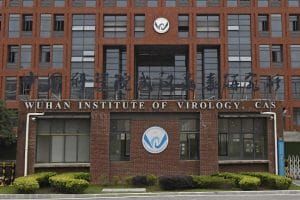
Documentary evidence indicates that the novel-bat-virus projects at Wuhan CDC and the Wuhan Institute of Virology used personal protective equipment and biosafety standards that would pose high risk of accidental infection of a lab worker upon contact with a virus having the transmission properties of the outbreak virus.
In assessing the possibility of a lab accident, one must take into consideration each of the following eight elements of circumstantial evidence:
1. Official Chinese government recognition early in the SARS-CoV-2 outbreak of biosafety inadequacies in China’s high containment facilities. In February 2020, several weeks after the outbreak of the disease in Wuhan, China’s President Xi Jinping stressed the need to ensure “biosafety and biosecurity of the country.”2 This was followed immediately by a China Ministry of Science & Technology announcement of new guidelines for laboratories, especially in handling viruses.3 Almost at the same time, the Chinese newspaper Global Times published an article on “chronic inadequate management issues at laboratories, including problems of biological wastes.”4
A PBS NewHour presentation on May 22, 2020 provided the following information:
On January 1, Wuhan Institute of Virology’s director general, Yanyi Wang, messaged her colleagues, saying the National Health Commission told her the lab’s COVID-19 data shall not be published on social media and shall not be disclosed to the media. And on January 3, the commission sent this document, never posted online, but saved by researchers, telling labs to destroy COVID-19 samples or send them to the depository institutions designated by the state. Late Friday [May 16, 2020] the Chinese government admitted to the destruction … but said it was for public safety.
The Chinese government explanation for the destruction of SARS-CoV-2 samples has no scientific credibility. For purposes of “public safety” any samples would surely be stored and studied, exactly as with the ones that were isolated from patients, and their RNA genomes decoded and published.
2. Recognition by Zhengli Shi, a renowned scientist who leads a research team at the Wuhan Institute of Virology, that a laboratory escape was a possibility. Shi took the possibility of a laboratory escape perfectly seriously. Jonna Mazat of the University of California-Davis, a collaborator with Dr Shi, told Josh Rogin of the Washington Post, “Absolutely, accidents can happen.” In an interview with Scientific American, Shi admitted that her very first thought was “If coronaviruses were the culprit, she remembers thinking ‘Could they have come from our lab?’”
Meanwhile she frantically went through her own lab’s records from the past few years to check for any mishandling of experimental materials, especially during disposal. She breathed a sigh of relief when the results came back: none of the sequences matched those of the viruses her team had sampled from bat caves. ‘That really took a load off my mind,’ she says. ‘I had not slept a wink for days.’
3. Questions surrounding Chinese government attribution of the Wuhan’s Huanan South China Seafood Market as the source of the SARS-CoV-2 virus. Many China scholars noted that it was quite unusual for Chinese government authorities to identify Wuhan’s Huanan South China Seafood Market so quickly as the source of the outbreak. They thought this behavior so uncharacteristic that it raised suspicions in their minds. The authors of a newly published paper wrote that
…we were surprised to find that SARS-CoV-2 resembles SARS-CoV in the late phase of the 2003 epidemic after SARS-CoV had developed several advantageous adaptations for human transmission. Our observations suggest that by the time SARS-CoV-2 was first detected in late 2019, it was already pre-adapted to human transmission to an extent similar to late epidemic SARS-CoV. However, no precursors or branches of evolution stemming from a less human-adapted SARS-CoV-2-like virus have been detected…. It would be curious if no precursor or branches of SARS-CoV-2 evolution are discovered in humans or animals….Even the possibility that a non-genetically-engineered precursor could have adapted to humans while being studied in a laboratory should be considered, regardless of how likely or unlikely.5
It is important to note that no intermediary host has yet been identified for the SARS-CoV-2 virus. The authors also noted that “[n]o animal sampling prior to the shutdown and sanitization [of the Wuhan fish market] was done.”
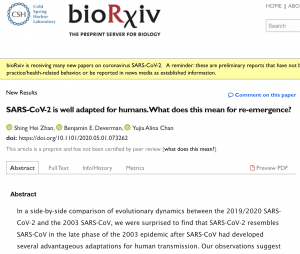
The question of whether the index case appeared in the Wuhan fish market appears to be moot in any case. Chinese researchers have published data showing that there were 41 cases of SARS-CoV-2 between December 1, 2019 and January 2, 2020. Fourteen of these had no contact with the Huanan seafood market, including the very first recorded case on December 1, 2019.6 And that supposes that the true index case was December 1, which is doubtful.
On May 26, the Chinese government scrapped the previous official story about the Wuhan fish market:
China’s top epidemiologist said Tuesday that testing of samples from a Wuhan food market, initially suspected as a path for the virus’s spread to humans, failed to show links between animals being sold there and the pathogen. Gao Fu, director of the Chinese Center for Disease Control and Prevention, said in comments carried in China state media.7
No SARS-CoV-2 isolates were detected in any of the animals or fish sold at the market, only in environmental samples, including sewage. Gao Fu added, “At first, we assumed the seafood market might have the virus, but now the market is more like a victim. The novel coronavirus had existed long before.”8
4. Suppression of information and individuals by Chinese authorities. A publication by two Chinese university academics discussed both the WHCDC and the WIV and concluded that “the killer coronavirus probably originated from a laboratory in Wuhan”; the publication was removed from the internet by Chinese government officials. The paper had been posted on Research Gate but was blocked after 24 hours. After being placed on an archive file by internet users, it was again blocked after a week, and the two Chinese authors were pressured to retract the paper. However, it is still available on Web archives.9
The Chinese government closed the laboratory in Shanghai that first published the genome of COVID-19 on January 10, explaining that it had been shuttered for “rectification”; the closure happened on January 11. The government then permitted the same genome to be published by Shi on January 12.10 Chinese citizens who reported on the coronavirus were censured and, in some cases, “disappeared.”11 These have included businessman Fang Bin, lawyer Chen Qiushi, former state TV reporter Li Zehua and, most recently, Zhang Zhan, a lawyer. They are reportedly being held in extrajudicial detention centers for speaking out about China’s response to the pandemic. They are usually accused of “picking quarrels and provoking trouble.”12
Another aspect of Chinese government secrecy involved in the SARS-CoV-2 pandemic relates to official reporting by Chinese government officials on the severity of the outbreak in China and on levels of mortality. The number of cases and deaths are suspected of being undercounted by at least an order of magnitude, and possibly two, meaning that the reported figures could be as little as one percent of the actual totals. In the last week of April 2020, Caixin, one of the most reliable publications in China, reported that a serological study had been carried out in Wuhan on 11,000 inhabitants. Extrapolating from its results, which showed that five to six percent of the sample of 11,000 persons carried antibodies for SARS-CoV-2, Caixin estimated that 500,000 people in the city had been infected, or 10 times the level of official Chinese government reporting. The publication was quickly deleted by Chinese government censors.13
The Chinese government has also attempted to obscure the origins of the pandemic with disinformation. On March 13, Chinese Foreign Ministry spokesperson Zhao Lijian suggested that the United States might have introduced the coronavirus to Wuhan.14 A month later, Zhao Lijian again posted Russian coronavirus and biowarfare-related disinformation, this time followed by online posts from Chinese ambassadors in 13 countries spread across the world.15 This was unprecedented diplomatic behavior for China, but not an accident. It was a concerted, deliberate, and preposterous disinformation campaign, repeated in May by CGTN, the China Global Television Network, which reposted the disinformation to the social media sites Weibo, Facebook, and Twitter.16 The history of Soviet and then Russian government biowarfare disinformation suggests that a country spreading such disinformation has or may have something to hide.17
5. Laboratory accidents and the escape of highly dangerous pathogens from laboratories are frequent occurrences worldwide. The accidental infection of researchers in the highest containment biosafety facilities—labelled BSL-2, BSL-3 and BSL-4—occurs worldwide, as do accidental releases by other means. In an excellent review published in February 2019, Lynn Klotz of the Center for Arms Control and Non-Proliferation noted that three releases of Ebola and Marburg viruses from BSL-4 and lower-containment facilities in the United States had occurred due to incomplete inactivation of cultures. Releases via infection of researchers took place in the highest containment facilities in the United States—at the Centers for Disease Control and Prevention (CDC) in Atlanta and at the US Army Medical Research Institute of Infectious Diseases (USAMRIID)—but in all cases only the researcher became ill, and there was no further transmission of the pathogen.
“In an analysis circulated at the 2017 meeting for the Biological Weapons Convention, a conservative estimate shows that the probability is about 20 percent for a release of a mammalian-airborne-transmissible, highly pathogenic avian influenza virus into the community from at least one of 10 labs over a 10-year period of developing and researching this type of pathogen,” Klotz wrote. “This percentage was calculated from FSAP [US Federal Select Agent Program] data for the years 2004 through 2010. Analysis of the FOIA NIH (National Institutes of Health) data gives a much higher release probability—that is, a factor five to 10 times higher, based on a smaller number of incident reports.”18
Between 2009 and 2015, the FSAP recorded 749 incidents in seven categories—not solely releases or researcher infections—from 276 facilities. In addition, Klotz recorded 11 confirmed releases of select agents that resulted in a laboratory-acquired infection in roughly 280 specifically approved laboratories in the United States between 2003 and 2017, a rate of just under one per year.19 A second publication in the Bulletin that covered closely-related subject matter and a personal communication from its author suggested that federally reported cases involving select agents were likely to be substantially undercounted:20
There is a fundamental problem of using the defined select agents as a surrogate for potential pandemic agent releases from research labs. The vast majority of ‘classical BW agents’ that initially defined select agents in the US were selected specifically to be NOT capable of sustained transmission so as to better define the military tactical limits of a military employment and because the establishment of progressive transmission was considered unpredictable and possibly counterproductive in military operations, at least on the US side of offensive development in the 1940s-1960s.
As my historical review of lab escapes that resulted in pandemics or wide area epidemics published in the BAS found, most pandemic, continental or large scale community outbreaks originating from lab escapes came from civilian labs working with public or veterinary pathogens of non-military interest.
It takes only one superspreading graduate student or maintenance worker to start a pandemic.
It is known that a very large percentage of the individuals infected with the SARS-CoV-2 virus show no symptoms and do not become clinically ill, which would facilitate an unrecognized infection of one or more laboratory researchers.
6. There have been laboratory accidents and escapes of highly dangerous pathogens in China in general and biosafety issues at the Wuhan Institute of Virology in particular. After the SARS epidemic in 2002-2003, which originated naturally in China and which China initially kept secret, work on the coronavirus pathogen that was responsible for the outbreak was undertaken in laboratories around the world. This research led to six cases of infection in laboratory workers: four in the National Institute of Virology in Beijing and one each in laboratories in Singapore and Taiwan.
The laboratory-acquired infections of lab workers in Beijing led to short-lived outbreaks of SARS in the Beijing region in 2004.21
A second case of infected researchers in China resulted in brief outbreaks of disease in early December 2019. An outbreak of brucellosis began in an agricultural laboratory in Lanzhou (Gansu Province, central China) and spread to China’s premier bird flu laboratory in Harbin (Heilongjiang Province, northeast China). It was linked to index cases involving graduate students who were exposed while conducting research and included at least 96 people.22
7. Under what biosafety conditions was bat coronavirus research carried out at the Wuhan Institute of Virology? Most work—including all published work using live bat coronaviruses that were not SARS-CoV and MERS-CoV—was conducted under BSL-2 conditions.23 This was consistent with both WHO and CDC recommendations.24 BSL-2 provides only minimal protection against infection of laboratory researchers, and these regulations were almost certainly too lenient for working with bat coronaviruses. All such work should have been carried out under BSL-3 conditions. However, extremely high-risk gain of function (GoF) studies with bat SARS-related coronaviruses were carried out at BSL-3 or BSL-4. Statements made by various commentators claiming that the WIV worked only with RNA isolates and not with live viruses are untrue (as discussed in further detail in a following section).
In regard to the Wuhan Institute of Virology in particular, relevant information is again available from both Chinese and Western sources. Information from official Chinese government sources appeared in a Voice of America report which noted:
[T]here is Chinese evidence that the lab had safety problems. VOA has located state media reports showing that there were security incidents flagged by national inspections as well as reported accidents that occurred when workers were trying to catch bats for study.
About a year before the corona virus outbreak, a security review conducted by a Chinese national team found the lab did not meet national standards in five categories.
The document on the lab’s official website said after a rigorous and meticulous review, the team gave a high evaluation of the lab’s overall safety management. “At the same time, the review team also put forward further rectification opinions on the five non-conformities and two observations found during the review.”
In addition to problems in the lab, state media also reported that national reviewers found scientists were sloppy when they were handling bats.
One of the researchers working at the Wuhan Center for Disease Control & Prevention described to China’s state media that he was once attacked by bats, and he ended up getting bat blood on his skin.
In another incident, the same researcher forgot to take protective measures, and the urine of a bat dripped “like rain onto the top of his head,” reported China’s Xinhua state news agent.25
Also, information was leaked from the US Department of State and published in the Washington Post on April 14:
Two years before the novel coronavirus pandemic upended the world, U.S. Embassy officials visited a Chinese research facility in the city of Wuhan several times and sent two official warnings back to Washington about inadequate safety at the lab, which was conducting risky studies on corona viruses from bats. The cables have fueled discussions inside the U.S. government about whether this or another Wuhan lab was the source of the virus – even though conclusive proof has yet to emerge.
In January 2018, the U.S. Embassy in Beijing took the unusual step of repeatedly sending U.S. science diplomats to the Wuhan Institute of Virology, which had in 2015 become China’s first laboratory to achieve the highest level of international bioresearch safety (known as BSL-4). WIV issued a news release in English about the last of these visits, which occurred on March 27, 2018. The U.S. delegation was led by Jamison Fouss, the consul general in Wuhan, and Rick Switzer, the embassy’s counselor of environment, science, technology and health. Last week, WIV erased that statement from its website, though it remains archived on the Internet.
What the U.S. officials learned during their visits concerned them so much that they dispatched two diplomatic cables categorized as Sensitive But Unclassified back to Washington. The cables warned about safety and management weaknesses at the WIV lab and proposed more attention and help. The first cable … also warns that the lab’s work on bat coronaviruses and their potential human transmission represented a risk of a new SARS-like pandemic.
“During interactions with scientists at the WIV laboratory, they noted the new lab has a serious shortage of appropriately trained technicians and investigators needed to safely operate this high-containment laboratory,” states the Jan. 19, 2018, cable, which was drafted by two officials from the embassy’s environment, science and health sections who met with the WIV scientists.
“Most importantly,” the cable states, “the researchers also showed that various SARS-like coronaviruses can interact with ACE2, the human receptor identified for SARS-coronavirus. This finding strongly suggests that SARS-like coronaviruses from bats can be transmitted to humans to cause SARS-like diseases. From a public health perspective, this makes the continued surveillance of SARS-like coronaviruses in bats and study of the animal-human interface critical to future emerging coronavirus outbreak prediction and prevention.26
The US government had supplied a portion of the funds to build the Wuhan Institute of Virology and these cables were an appeal for funds to support additional training in biosafety and biosecurity. There were similar concerns about the nearby Wuhan Center for Disease Control and Prevention lab, which operates entirely at BSL-2. Chinese government authorities did not provide the US government with samples of the virus obtained from either the earliest cases or from the Wuhan fish market. A US intelligence official commented: “The idea that it was just a totally natural occurrence is circumstantial. The evidence it leaked from the lab is circumstantial. Right now, the ledger on the side of it leaking from the lab is packed with bullet points, and there’s almost nothing on the other side.”27
8. What is the nature of the research being carried out in Zhengli Shi’s laboratory at the Wuhan Institute of Virology? Details of the most recent National Institute of Allergy and Infectious Diseases (NIAID) grant for WIV bat coronavirus surveillance and WIV bat coronavirus gain of function research are publicly available. The key activity for bat coronavirus surveillance is “Aim 1 … We will sequence receptor binding domains (spike proteins) to identify viruses with the highest potential for spillover which we will include in our experimental investigations (Aim 3).” The key activity for bat coronavirus gain of function investigation is “Aim 3…. We will use S protein sequence data, infectious clone technology, in vitro and in vivo infection experiments, and analysis of receptor binding to test the hypothesis that % divergence thresholds in S protein sequences predict spillover potential.”28
Translated into something approaching lay language, Aim 3 states that de novo synthesis is to be used to construct a series of novel chimeric viruses, comprising recombinant hybrids using different spike proteins from each of a series of unpublished natural coronaviruses in an otherwise-constant genome of a bat coronavirus. The ability of the resulting novel viruses to infect human cells in culture and to infect laboratory animals would be tested. The underlying hypothesis is that a direct correlation would be found between the receptor-binding affinity of the spike protein and the ability to infect human cells in culture and to infect laboratory animals. This hypothesis would be tested by asking whether novel viruses encoding spike proteins with the highest receptor-binding affinity have the highest ability to infect human cells in culture and laboratory animals.
The WIV began its gain of function research program for bat coronaviruses in 2015. Using a natural virus, institute researchers made “substitutions in its RNA coding to make it more transmissible. They took a piece of the original SARS virus and inserted a snippet from a SARS-like bat coronavirus, resulting in a virus that is capable of infecting human cells.”29 This meant it could be transmitted from experimental animal to experimental animal by aerosol transmission, which means that it could do the same for humans. In other words, gain of function techniques were used to turn bat coronaviruses into human pathogens capable of causing a global pandemic.
There have been three publications, in 2015,30 2016 and 2017, describing the WIV gain of function research. The WIV, having learned both basic and traceless infectious-clone technology from joint research with a laboratory at the University of North Carolina (UNC) in 2015, initiated construction of novel chimeric coronaviruses without UNC immediately thereafter. WIV’s first publication on the use of basic infectious-clone technology to construct novel chimeric coronaviruses at WIV appeared in 2016.31 WIV’s first publication on the use of traceless, signature-free infectious-clone technology also appeared in 2016.32
As this article was being edited, two excellent publications appeared that provide greater technical detail on WIV’s gain of function research, and readers should certainly examine these with care.33 The two papers strongly support the argument that the SARS-CoV-2 outbreak was the results of an escape from one of the two Chinese virology laboratories in Wuhan.
The Chinese government has proudly stated that the WIV “preserves more than 1,500 strains of virus,” the largest collection in Asia of bat and other coronaviruses.34 (The government statement probably should have said 1,500 isolates rather than “strains.”) The 2019 interview with Shi in Scientific American reports that the WIV had at least hundreds of individual strains.35 These numbers have been reported by Chinese government authorities, and they are being taken at face value here.
From 2004 on, the WIV published many dozens of partial or full genome sequences of coronaviruses in their collection. On June 1, Daszak and Shi published partial genetic sequences of 781 Chinese bat coronaviruses, more than one-third of which had never been published previously.36 There are also multiple published records of animal infection research with bat coronaviruses at the WIV. In order to carry out the research program described above, the WIV laboratory needs to use live viruses, and not just RNA fragments. This contradicts two of the assertions, made by some commentators, that Shi worked only with RNA fragments and that her laboratory did not maintain live viruses. On May 24, 2020, the director of the WIV acknowledged that the laboratory did have “three live strains of bat corona viruses on site,” but implied only three.37 Knowledgeable virologists assume that the number must be much higher, probably hundreds of live viral isolates.38
It is precisely in the course of the kind of gain of function research that the WIV conducted that there would be the greatest likelihood of infection of a laboratory researcher. Many commentators have noted that millions of people in several western Chinese provinces, as well as in other South Asian countries, live their lives in daily proximity to bat caves and that serological testing has shown a fraction of these villagers to have antibodies to bat coronaviruses, showing that natural infection had occurred. The commentators argue therefore that “the odds” are in favor of SARS-CoV-2 having arisen in the field, and that a laboratory escape is so implausible that it is out of consideration. The logic of “the odds” is specious: It would take only a single laboratory infection to overcome “the odds,” if such could in fact be reckoned. That is essentially what happened in the four SARS laboratory infections that occurred in the Beijing laboratory in 2004; “the odds” for exposure of villagers in Yunnan province were irrelevant.
Since the SARS-CoV-2 genome was decoded and published, there have been numerous statements from virologists that the genome shows no indication of genetic manipulation, and that this too supports the argument that it arose in the field and did not escape from a laboratory. Although this argument implicitly recognizes that the WIV laboratory was using genetic engineering technology, there is no reason to arbitrarily assume that only a bat coronavirus that was genetically modified might have escaped from the laboratory. Nevertheless, the second portion of the NIAID research grant design made absolutely clear that the WIV would be applying genetic engineering techniques to bat coronaviruses. Using the current standard genetic engineering technology, many alterations of several bases in the RNA genome would be undetectable, including construction of a chimeric coronavirus encoding an unpublished spike protein in an unpublished genome. This would be the equivalent of a natural mutation in several bases that coded for the spike proteins.
An article in Independent Science News by Jonathan Latham and Allison Wilson discusses another mechanism, described by Nikolai Petrovsky of Flinders University in Australia, that could have resulted in the SARS-CoV-2 virus that produced the pandemic:
Take a bat coronavirus that is not infectious to humans, and force its selection by culturing it with cells that express human ACE2 receptor, such cells having been created many years ago to culture SARS coronaviruses and you can force the bat virus to adapt to infect human cells via mutations in its spike protein, which would have the effect of increasing the strength of its binding to human ACE2, and inevitably reducing the strength of its binding to bat ACE2.
Viruses in prolonged culture will also develop other random mutations that do not affect its function. The result of these experiments is a virus that is highly virulent in humans but is sufficiently different that it no longer resembles the original bat virus. Because the mutations are acquired randomly by selection there is no signature of a human gene jockey, but this is clearly a virus still created by human intervention.39
Final comments. On April 30, Newsweek described a report produced by the US Defense Intelligence Agency which stated that “in early February, China’s Academy for Military Medical Sciences ‘concluded that it was impossible for them to scientifically determine whether the Covid-19 outbreak was caused naturally or accidentally from a laboratory incident.’” The author of a newly published paper analyzing the genome of SARS-COV-2 reported that “the COVID-19 virus is exquisitely adapted to infect humans… The virus’s ability to bind protein on human cells was far greater than its ability to bind the same protein in bats, which argues against bats being a direct source of the human virus.”40
Overall, the data indicates that SARS-CoV-2 is uniquely adapted to infect humans, raising important questions as to whether it arose in nature by a rare chance event or whether its origins might lie elsewhere.
Geng Shuang, a spokesman for the Chinese Ministry of Foreign Affairs, said. “China has mentioned many times that the origin of the virus is a scientific question, which should be evaluated by scientists and medical experts, and should not be politicized.”41 Essentially the same position on the possibility that a lab leak originated the pandemic was expressed by Xiao Qiang, a research scientist at the School of Information at the University of California, Berkeley. “I don’t think it is a conspiracy theory. I think it’s a legitimate question that needs to be investigated and answered. To understand exactly how this originated is critical knowledge for preventing this from happening in the future.”42
But Chinese officials reacted angrily in April when Australian officials suggested that the World Health Organization should be able to quickly investigate a disease outbreak that could lead to a pandemic, retaliating by instituting trade restrictions on several Australian agricultural exports to China. In early May, the World Health Organization’s representative in China, Gauden Galea, publicly complained that China had refused repeated requests to permit the WHO to participate in whatever investigations the Chinese government was undertaking itself. He said that the WHO had not been given access to laboratory logs at the WIV or the Wuhan Chinese Center for Disease Control and Prevention.43
On May 18, prior to a meeting of the WHO governing board, the European Union submitted a draft resolution supported by 100 nations that asked the WHO “to work with other United Nations agencies to ‘identify the zoonotic source of the virus and the route of introduction to the human population, including the possible role of intermediate hosts. … The document does not propose a review to identify missteps in how countries handled the outbreak and is instead forward-looking. It calls on the WHO to potentially arrange ‘scientific and collaborative field missions’ to help prevent similar future outbreaks. It also appears to rule out the possibility that the virus was man-made or experimented upon.”44
The draft resolution did not mention Wuhan or China.45
On May 18, China’s President Xi addressed the meeting of the governing body of the WHO via video. Ironically, Xi asked that countries “step up information sharing” but declared that China would support a review of the pandemic led by the WHO as long as it was “objective and impartial” and held after the pandemic was under control or over. The operative WHO resolution focuses on identifying “the zoonotic source of the virus” and says nothing about any forensic investigation.46 The Chinese Foreign Ministry spokesman Zhao Lijian declared that “China supported an international inquiry all along,” and China’s Global Times asked: “Will China oppose scientific research into the virus’ origin? No, because it is a necessary move to fight COVID-19 in a scientific way and conducive to prevention measures and development of vaccines and medicine,” but added “Not only China-related factors but also those related to the US and other countries need to be included. Earlier confirmed cases than the previously known first infected case have continuously been found in the US. Among those diagnosed as having flu last winter, how many were coronavirus infections? All these clues shouldn’t be missed.”47
What does this all mean at the present time? We have in China:
• a record of laboratory escape of the SARS virus in 2004 from a premier Chinese research institute.
• a record of poor biosafety in some of its high-containment facilities, including in the Wuhan institutes.
• a record of suppression of information in general, and in the case of SARS-CoV-2 in particular.
• the initiation of a disinformation campaign in regard to the origin of SARS-CoV-2, targeting US biological laboratories.
• a record of gain of function research at the Wuhan Institute of Virology, including passage of a bat coronavirus construct through experimental animals.
Writing in the Bulletin of the Atomic Scientists before the WHO governing board was convened, Filippa Lentzos advocated for a forensic investigation and described what it would entail:
Investigating the range of possible spillover sites—from the wet market, to an accidental lab or fieldwork infection, or an unnoticed lab leak—requires a forensic investigation. Obtaining case histories, epidemiological data, and viral samples from different times and places, including the earliest possible samples from infected individuals and samples from wildlife, is paramount… A forensic investigation would additionally involve auditing and sampling viral collections at relevant labs that had been studying coronaviruses, examining the types of experiments carried out and the viruses used, and reviewing the safety and security practices in place. Key data would also come from documents, including standard operating procedures at the labs and during fieldwork, risk assessments of individual experiments, experiment logs and fieldwork notebooks, training records, waste management logs, accident and infection records, facility maintenance and automated systems records, access logs, security camera footage and communications logs. …A COVID-19 origins investigation will need to be negotiated and begun rapidly before relevant data diminishes or disappears entirely as time passes.48
There is no semblance of any of this in the WHO resolution, and one can scarcely imagine that any of it would be permitted by the current administration in China. An investigation held after the pandemic “is under control” cannot possibly be carried out “rapidly,” and is in fact postponed into the indefinite future. Unfortunately, if there were any documentation in either of the two Wuhan virology institutes that recorded the infection of a laboratory researcher or an escape, or that either had a virus sample that was extremely similar to SARS-CoV-2, one has to assume that such information has already been removed or destroyed.
Others have suggested that an international “commission, independent of the WHO, needs to be set up with the broad objective of how to ameliorate the next pandemic. Its mandate should go well beyond that of the WHO and part of its work could be to look at how COVID-19 started.”49 Unfortunately it is equally difficult to envision such a commission coming to pass.
At present, the origin of SARS-CoV-2 remains unknown. The pros and cons regarding the two alternative possibilities—first, that it arose in the field as a natural evolution, as many virologists maintain, or second, that it may have been the consequence of bat coronavirus research in one of the two virology research institutes located in Wuhan that led to the infection of a laboratory researcher and subsequent escape—are equally based on inference and conjecture. The points gathered in this paper can be no more than suggestive. There is no hard scientific evidence to support either position. Both are inferences from circumstantial evidence. The US administration’s political hectoring only assures that it will be very difficult if not impossible to ever find out which is true.
Acknowledgements: The author would like to thank several colleagues with far-better computer skills than he has for supplying many of the electronic references. I would also like to thank several colleagues for reading and commenting on the paper. This manuscript was submitted for publication on May 27, 2020.
Notes
1 ↑ Shane Harris et al, “Intelligence officials’ early alarms about possible pandemic went unheeded,” Washington Post, March 21, 2020; Eric Lipton et al, “Despite timely alerts, Trump was slow to act,” New York Times, April 12, 2020; Philip Rucker et al, “As deaths mounted, Trump fixated on stalled economy,” Washington Post, May 3, 2020; Edward Luce, “Inside Trump’s Corona Virus Meltdown,” Financial Times Magazine, May 14, 2020; Fintan O’Toole, “Vector in Chief,” New York Review of Books, 67:8, May 14, 2020; and Fintan O’Toole, “Donald Trump has destroyed the country he promised to make great again,” Irish Times, April 25, 2020.
2 ↑ See https://www.scmp.com/news/china/society/article/3050754/xi-jinping-calls-overhaul-chinas-health-crisis-response-system; https://www.bloomberg.com/news/articles/2020-02-04/xi-warns-virus-may-impact-china-s-stability-at-rare-meeting.
3 ↑ Liu Caiyu and Leng Shumai, “Biosafety guidelines issued to fix chronic management loopholes at virus labs,” Global Times, February 16, 2020, https://www.globaltimes.cn/content/1179747.shtml.
4 ↑ Liu Caiyu and Leng Shumai, “Biosafety guidelines issued to fix chronic management loopholes at virus labs,” Global Times, February 16, 2020, https://www.globaltimes.cn/content/1179747.shtml, and Yuan Zhiming, “Current status and future challenges of high-level biosafety laboratories in China, Journal of Biosafety and Biosecurity, Volume 1, Issue 2, September 2019, pp. 123-127. Accessed at: https://doi.org/10.1016/j.jobb.2019.09.005.
5 ↑ Shing Hei Zhan, Benjamin E. Deverman and Yujia Alina Chan, “SARS-CoV-2 is well adapted for humans. What does this mean for re-emergence?” BioRxiv, posted May 2, 2020 on: https://doi.org/10.1101/2020.05.01.073262.
6 ↑ Chaolin Huang Yeming Wang, Xingwang Li, Lili Ren, Jianping Zhao, Yi Hu, Li Zhang et al, “Clinical Features of Patients Infected with 2019 Novel Coronavirus in Wuhan, China,” The Lancet, Vol. 395, no. 10223 (February 15, 2020): 497-506, https://doi.org/10.1016/S0140-6736(20)30183-5.
7 ↑ James T. Areddy, “China rules out Animal Market and Lab as Coronavirus origin,” Wall Street Journal, May 26, 2020, https://www.wsj.com/articles/china-rules-out-animal-market-and-lab-as-coronavirus-origin-11590517508.
8 ↑ “Wuhan’s seafood market a victim of COVID-19: CDC director,” Global Times [China], May 26, 2020, https://www.globaltimes.cn/content/1189506.shtml.
9 ↑ Botao Xiao and Lei Xiao, “The possible origins of 2091-nCoV coronavirus,” https://img-prod.tgcom24.mediaset.it/images/2020/02/16/114720192-5eb8307f-017c-4075-a697-348628da0204.pdf.
10 ↑ Jon Cohen, “Chinese researchers reveal draft genome of virus implicated in Wuhan pneumonia outbreak,” Science, January 11, 2020, https://www.sciencemag.org/news/2020/01/chinese-researchers-reveal-draft-genome-virus-implicated-wuhan-pneumonia-outbreak.
11 ↑ Christian Shepherd and Don Weinland, “China Rounds up Wuhan’s Citizen Journalists for ‘Provoking Quarrels’,” Financial Times, May 28, 2020, https://www.ft.com/content/3fd5c031-2152-4cab-8bd7-f7871f6ecf64; Aylin Woodward, “At least 5 people in China have disappeared, gotten arrested, or been silenced after speaking out about the coronavirus — here’s what we know about them,” Business Insider, February 20, 2020, https://businessinsider.com/china-coronavirus-whistleblowers-speak-out-vanish-2020-2; “Coronavirus: Wuhan doctor speaks out against authorities,” The Guardian, March 11, 2020, https://www.theguardian.com/world/2020/mar/11/coronavirus-wuhan-doctor-ai-fen-speaks-out-against-authorities; Scott Neuman, Emily Feng and Huojingnan, “China To Investigate After Whistleblower Doctor Dies From Coronavirus,” February 7, 2020, https://www.npr.org/sections/goatsandsoda/2020/02/07/803680463/china-to-investigate-after-whistleblower-doctor-dies-from-coronavirus; Verna Yu, “’Hero who told the truth’: Chinese rage over coronavirus death of whistleblower doctor,” The Guardian, February 7, 2020, https://wwwthe.guardian.com/global-development/2020/feb/07/coronavirus-chinese-rage-death-whistleblower-doctor-li-wenliang.
12 ↑ “A 4th Chinese citizen journalist was reportedly detained after livestreaming what life was like in Wuhan at the height of its coronavirus outbreak,” Business Insider, https://www.businessinsider.com/zhang-zhan-fourth-chinese-journalist-arrested-for-livestreaming-in-wuhan-2020-5. This paper does not attempt to resolve allegations that have been published claiming that a former graduate student at the WIV, Huang Yan Ling, was the index case and subsequently died or disappeared. The allegations have been denied by the Chinese government as well as by members of the WIV staff. Jun Mai, “Chinese research lab denies rumours of links to first coronavirus patient,” South China Morning Post, February 16, 2020, https://www.scmp.com/news/china/society/article/3050872/chinese-research-lab-denies-rumours-links-first-coronavirus.
13 ↑ Keoni Everington, “Chinese Media Estimates 500,000 Coronavirus Cases in Wuhan, Quickly deletes News,” Taiwan News, May 19, 2020, https://www.taiwannews.com.tw/en/news/3936718.
14 ↑ Elise Thomas, “Chinese diplomats and Western fringe media outlets push the same coronavirus conspiracies,” Australian Strategic Policy Institute, March 24, 2020, https://www.aspistrategist.org.au/chinese-diplomats-and-western-fringe-media-outlets-push-the-same-coronavirus-conspiracies/. The “Western fringe media” were reposting earlier Russian disinformation posts.
15 ↑ Matt Schrader, “Analyzing China’s Coronavirus Propaganda Messaging in Europe,” https://securingdemocracy.gmfus.org/analyzing-chinas-coronavirus-propaganda-messaging-in-europe/.
16 ↑ CGTN, “US operates over 200 military biological laboratories worldwide,” 21 May 2020, https://news.cgtn.com/news/2020-05-21/U-S-deployed-over-200-military-biological-laboratories-worldwide-QFtLkqhuVy/index.html.
17 ↑ Milton Leitenberg, “ Russian Disinformation Campaigns re Biological Weapons in the Putin Era,” https://cissm.umd.edu/sites/default/files/2020-05/Russian%20Disinformation%20on%20Biological%20Weapons%20in%20the%20Putin%20PPT
%2011%20Dec%202019_Rev%208%20May%202020.pdf.
18 ↑ Lynn Klotz, “Human error in high-biocontainment labs: a likely pandemic threat,” Bulletin of the Atomic Scientists, February 25, 2019.
19 ↑ Lynn Klotz, “The risk of lab-created potential pandemic influenza,” March 2020, https://armscontrolcenter.org/wp-content/uploads/2020/03/Quantifying-the-risk-9-17-Supplementary-material-at-end.pdf.
20 ↑ Martin Furmanski, “Threatened pandemics and laboratory escapes: Self-fulfilling prophecies,” Bulletin of the Atomic Scientists, March 31, 2014 and Martin Furmanski, personal communication, May 29, 2020.
21 ↑ Robert Walgate, “SARS escaped Beijing lab twice: Laboratory safety at the Chinese Institute of Virology under close scrutiny,” The Scientist, April 24, 2004, https://www.the-scientist.com/news-analysis/sars-escaped-beijing-lab-twice-50137.
22 ↑ Rosie McCall, “Almost 100 Lab Workers in China Infected With Potentially Deadly Pathogen,” Newsweek, December 17, 2019, https://www.newsweek.com/almost-100-lab-workers-china-infected-potentially-deadly-pathogen-1477652.
23 ↑ Lei-Ping Zeng et al, “Bat SARS-like coronavirus WIV1 encodes an extra accessory protein ORFX involved in modulation of host immune response,” Journal of Virology 2016 May 11:JVI-03079, https://jvi.asm.org/content/jvi/early/2016/05/05/JVI.03079-15.full.pdf.
24 ↑ Laboratory biorisk management for laboratories handling human specimens suspected or confirmed to contain novel coronavirus: Interim recommendations, https://www.who.int/csr/disease/coronavirus_infections/Biosafety_InterimRecommendations_
NovelCoronavirus_19Feb13.pdf; Centers for Disease Control and Prevention, “Appendix F5— Laboratory Biosafety Guidelines for Handling and Processing Specimens Associated with SARS-CoV. Supplement F: Laboratory Guidance. Public Health Guidance for Community-Level Preparedness and Response to Severe Acute Respiratory Syndrome (SARS) Version 2/3,” https://www.cdc.gov/sars/guidance/f-lab/app5.html.
25 ↑ John Xie, “Chinese Lab with Checkered Safety Record Draws Scrutiny over Covid-19,” VOA News, April 21, 2020, https://www.voanews.com/covid-19-pandemic/chinese-lab-checkered-safety-record-draws-scrutiny-over-covid-19.
26 ↑ Josh Rogin, “State Department cables warned of safety issues at Wuhan lab studying bat coronaviruses,” Washington Post, April 14, 2020.
27 ↑ Josh Rogin, “State Department cables warned of safety issues at Wuhan lab studying bat coronaviruses.” A press item reported that an alleged 15-page “Five Eyes” intelligence report shared among the US, UK, Australia, Canada and New Zealand validated many of the charges against the WIV. Dave Makichuk, “Dossier an indictment of China’s virus response,” The Saturday Telegraph [UK], May 3, 2020. However, the Australian government announced that the “report” had been prepared from open source materials by the US alone, was not an agreed intelligence report, and was leaked by the US embassy to a Rupert Murdoch publication. Anthony Galloway and Eryk Bagshaw, “Australian intelligence knocks back US government’s Wuhan lab virus claim,” Sydney Morning Herald, May 4, 2020, https://www.smh.com.au/politics/federal/australian-intelligence-knocks-back-us-government-s-wuhan-lab-virus-claim-20200504-p54pk3.html; Anthony Galloway and Eryk Bagshaw, “Australian concern over US spreading unfounded claims about Wuhan lab,” Sydney Morning Herald, May 7, 2020, https://www.smh.com.au/politics/federal/australian-concern-over-us-spreading-unfounded-claims-about-wuhan-lab-20200506-p54qhp.html.
28 ↑ See https://projectreporter.nih.gov/project_info_description.cfm?aid=9819304&icde=49645421&ddparam=&ddvalue=&ddsub=&cr=1&csb=default&cs=ASC&pball=
29 ↑ Fred Guteri et al, “The Controversial Experiments and Wuhan Lab suspected of Starting Pandemic,” Newsweek, April 30, 2020.
30 ↑ Vineet D. Menachery et al, “A SARS-like Cluster of Circulating Bat Coronaviruses Shows Potential for Human Emergence,” Nat Med. 2015 Dec; 21(12):1508-13. doi: 10.1038/nm.3985. Epub 2015 Nov 9, https://pubmed.ncbi.nlm.nih.gov/26552008/.
31 ↑ LP Zeng et al, “Bat Severe Acute Respiratory Syndrome-Like Coronavirus WIV1 Encodes an Extra Accessory Protein, ORFX, Involved in Modulation of the Host Immune Response,” J Virol. 2016 Jun 24;90(14):6573-6582. doi: 10.1128/JVI.03079-15. Print 2016 Jul 15, (methods for construction of chimeric coronaviruses, https://pmlegacy.ncbi.nlm.nih.gov/pubmed/27170748.
32 ↑ B. Hu et al, “Discovery of a rich gene pool of bat SARS-related coronaviruses provides new insights into the origin of SARS coronavirus,” PLoS Pathog. 2017 Nov 30;13(11):e1006698. doi: 10.1371/journal.ppat.1006698. eCollection 2017 Nov, (construction of chimeric coronaviruses encoding different S proteins), https://pmlegacy.ncbi.nlm.nih.gov/pubmed/29190287.
33 ↑ Yuri Deigin, “Lab-Made? SARS-CoV-2 Genealogy Through the Lens of Gain-of-Function Research, April 22, 2020, https://medium.com/@yurideigin/lab-made-cov2-genealogy-through-the-lens-of-gain-of-function-research-f96dd7413748 and Jonathan Latham and Allison Wilson, “The Case is Building That COVID-19 Had a Lab Origin,” Independent Science News, June 2, 2020, https://www.independentsciencenews.org/health/the-case-is-building-that-covid-19-had-a-lab-origin/.
34 ↑ Wuhan Institute of Virology, CAS, “Take a look at the largest virus bank in Asia,” 2018, http://english.whiov.cas.cn/ne/201806/t20180604_193863.html.
35 ↑ Jane Qiu, “How China’s ‘Bat Woman’ Hunted Down Viruses from SARS to the New Coronavirus,” Scientific American, June 2020, https://www.scientificamerican.com/article/how-chinas-bat-woman-hunted-down-viruses-from-sars-to-the-new-coronavirus1/
36 ↑ Jon Cohen and Kai Kupferschmidt, “NIH-halted study unveils ist massive analysis of bat coronaviruses,” Science, June 2, 2020, https://www.sciencemag.org/news/2020/06/nih-halted-study-unveils-its-massive-analysis-bat-coronaviruses.
37 ↑ Agence France Presse, “Wuhan lab had three live bat coronaviruses: Chinese state media,” May 24, 2020, https://au.news.yahoo.com/wuhan-lab-had-three-live-bat-coronaviruses-chinese-033127925–spt.html.
38 ↑ Personal communication, May 24, 2020.
39 ↑ Jonathan Latham and Allison Wilson, “The Case is Building That COVID-19 Had a Lab Origin,” Independent Science News, June 2, 2020, https://www.independentsciencenews.org/health/the-case-is-building-that-covid-19-had-a-lab-origin/.
40 ↑ Press Release, Flinders University, “Origins of COVID-19 still a mystery”, May 14, 2020; Sakshi Piplani et al, “In Silico Comparison of Spike Protein-ACE2 Binding Affinities across Species: Significance for the Possible Origin of the SARS-CoV-2 Virus,” ArXiv:2005.06199 [q-Bio], May 13, 2020, http://arxiv.org/abs/2005.06199. See also, Jeremy Andre, “Origine du coronavirus: ‘L’Infection d’un employé de laboratoire de Wuhan est plus probable’,” Le Point International, April 18, 2020 and Jef Akst, “Lab-Made Coronavirus Triggers Debate,” The Scientist, November 16, 2015 (updated March 11, 2020), https://www.the-scientist.com/news-opinion/lab-made-coronavirus-triggers-debate-34502.
41 ↑ John Xie, “Chinese Lab with Checkered Safety Record Draws Scrutiny over COVID-19,” VOA News, April 21, 2020, https://www.voanews.com/covid-19-pandemic/chinese-lab-checkered-safety-record-draws-scrutiny-over-covid-19.
42 ↑ Kenneth Rapoza, “China Lab in Focus of Corona Virus Outbreak,” Forbes, April 14, 2020, https://www.forbes.com/sites/kenrapoza/2020/04/14/the-washington-post-goes-rogue-china-lab-in-focus-of-coronavirus-outbreak/.
43 ↑ Patrick Smith, “WHO official says agency not invited to take part in China’s coronavirus investigation,” NBC News, May 1, 2020, https://nbcnews.com/news/world/who-official-says-agency-not-invited-take-part-china-s-n1197516.
44 ↑ Gerry Shih, “China’s Xi backs WHO-led review of covid-19 outbreak, proposes aid for developing world,” Washington Post, May 18, 2020, https://www.washingtonpost.com/world/asia_pacific/chinas-xi-backs-who-led-review-of-covid-19-outbreak-proposes-aid-for-developing-world/2020/05/18/911a1544-98df-11ea-ad79-eef7cd734641_story.html.
45 ↑ Gerry Shih, “China’s Xi backs WHO-led review of covid-19 outbreak, proposes aid for developing world,” Washington Post, May 18, 2020, https://www.washingtonpost.com/world/asia_pacific/chinas-xi-backs-who-led-review-of-covid-19-outbreak-proposes-aid-for-developing-world/2020/05/18/911a1544-98df-11ea-ad79-eef7cd734641_story.html.
46 ↑ WHO, Draft Resolution: COVID-19 response, A73/CONF./1 Rev.1, May 18, 2020, https://apps.who.int/gb/ebwha/pdf_files/WHA73/A73_CONF1Rev1-en.pdf.
47 ↑ “Editorial: Virus investigation must be fair, scientific,” Global Times, May 17, 2020, https://www.globaltimes.cn/content/1188620.shtml. On May 4, 2020, a Chinese Hsinhua publication asked the question “Where did the virus in the U.S. originate?”: “On March 11, CDC Director Robert Redford told a hearing on Capitol Hill that some COVID-19 deaths have been diagnosed as flu-related in the United States. Washington needs to clarify the number of COVID-19 cases previously diagnosed as flu, and make public the samples and genetic sequence of the influenza virus in the country.” “Spotlight: Five Questions Washington needs to answer on coronavirus pandemic,” XINHUANET, May 4, 2020.
48 ↑ Filippa Lentzos, “Will the WHO call for an international investigation into the coronavirus’s origins?”, The Bulletin of the Atomic Scientists, May 18, 2020.
49 ↑ Personal communication, Rod Barton, May 25, 2020.
Together, we make the world safer.
The Bulletin elevates expert voices above the noise. But as an independent nonprofit organization, our operations depend on the support of readers like you. Help us continue to deliver quality journalism that holds leaders accountable. Your support of our work at any level is important. In return, we promise our coverage will be understandable, influential, vigilant, solution-oriented, and fair-minded. Together we can make a difference.
Keywords: BSL-2, BSL-3, BSL-4, COVID-19, Chinese laboratory leak, Coronavirus, SARS-CoV-2, Wuhan, bat virus, essential biosecurity reading, pandemic origin
Topics: Biosecurity
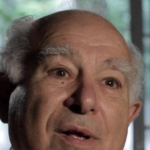





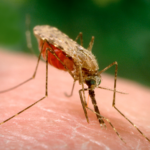
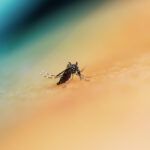

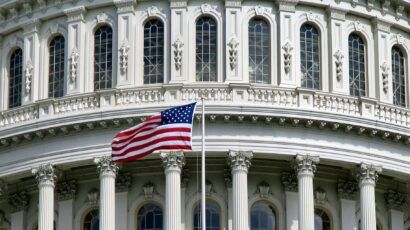






The author writes
8. What is the nature of the research being carried out in Zhengli Shi’s laboratory at the Wuhan Institute of Virology?
then gives evidence from an NIH grant awarded to ECO HEALTH ALLIANCE in New York
that Bat COVID was adapted to human culture to study changes in spike protein that might lead to greater human pathogenicity. Without clearly explaining the link, if any, between ECO and WIV, the statement is misleading, meritless and at this moment dangerous. While many of the arguments are compelling, the absence of the aforementioned link renders the article of little use.
The author says: “The US government had imposed a moratorium on these so-called gain-of-function studies in 2014. No such restrictions were imposed in China, but the work of Shi and Daszak .. was funded in part through US government grants. Their work was already underway before the moratorium began, and the US National Institutes of Health (NIH) allowed it to proceed while it was under review by the agency. The NIH eventually concluded the work was not so risky as to fall under the moratorium.” In 2012 I co-authored an editorial in the journal EcoHealth, with Peter Dasak and others… Read more »
How about asking the virology labs in the US, UK, France, Russia, and others to open up for an investigation, besides just China’s labs??? Is that not more fair?
Western labs are more transparent by design. WIV is near the center of the outbreak.
Also a corresponding article here on the origins of the virus:
https://www.independentsciencenews.org/health/the-case-is-building-that-covid-19-had-a-lab-origin/
Excellently written.
A lot of this article is speculation. The people most exposed to this bat virus in China who live near these bats, of them 3% contain antibodies and there have been no diseases emerging from them. Secondly, the article contradictrs itself when it says Shi said she found no such virus in her records or problems with virus. Thirdly, An American scientific researcher said it could not have been an escape because this particular virus was not at the lab. So it could not have led to infected humans or animals at the the lab. The basis for the speculation… Read more »
Why in all the discussion about the possibility of the SARS_CofV-2 virus having leaked from a lab only Chinese labs are considered, never our demonstrably leaky USAMRIID lab at Ft. Detrick? (For a discussion of that possibility, see https://kiaskblog.wordpress.com/2020/05/04/the-virus-of-nationalism/ )
The fact is, the possibility of an accidental escape/leak of SARS-CoV-2 virus from a research laboratory has to date not been discounted and therefore cannot be ignored. For obvious reasons clearly laid out, the paper by Milton Leitenberg focusses on Wuhan laboratories as a possible source of escape. The assessment draws on eight well researched points of circumstantial evidence that are plainly designated as such. This is one of the most thorough examinations of the subject yet. Though the evidence is circumstantial, taken together the arguments make a tenable case. The author himself clearly states that the points made are… Read more »
The origin has been shown not to be lab-based but natural. The proximal origin of SARS-CoV-2 Kristian G. Andersen, Andrew Rambaut, W. Ian Lipkin, Edward C. Holmes & Robert F. Garry Nature Medicine volume 26, pages450–452(2020)Cite this article To the Editor — Since the first reports of novel pneumonia (COVID-19) in Wuhan, Hubei province, China1,2, there has been considerable discussion on the origin of the causative virus, SARS-CoV-23 (also referred to as HCoV-19)4. Infections with SARS-CoV-2 are now widespread, and as of 11 March 2020, 121,564 cases have been confirmed in more than 110 countries, with 4,373 deaths5. SARS-CoV-2 is… Read more »
The genome of Covid-19 remains the best evidence for laboratory origin of Covid-19. The grandparent and great grandparent coronaviruses of Covid-19, such as BtKy72, collected in Kenya in 2007, by the Atlanta CDC. But not isolated and sequenced by them until April 2019, and then only incompletely. See Atlanta CDC paper, ‘Complete Genome Sequence of a Severe Acute Respiratory Syndrome-Related Coronavirus from Kenyan Bats’, by Ying Tao and Suxiang Tong. Covid-19 great grandparent coronaviruses BtKy72 and BM48-31 (Bulgaria-Drosten) were in the same Atlanta CDC laboratory, in prepandemic April 2019. Of course, only coincidentally.
A correction from the author above. I did not mean to use the words “grandfather and great grandfather” in the above post. I meant to say “Covid-19 and BtKy72 probably shared a common ancestor coronavirus, diverging possibly hundreds of years ago.” Also, BM48-31 sequences were used a degenerate primers (Table 1 in the article) in the attempted sequencing of BtKy72. No “complete” sequencing of BtKy72 at the time the article was published in May 2019, lack of RNA. Thank you.